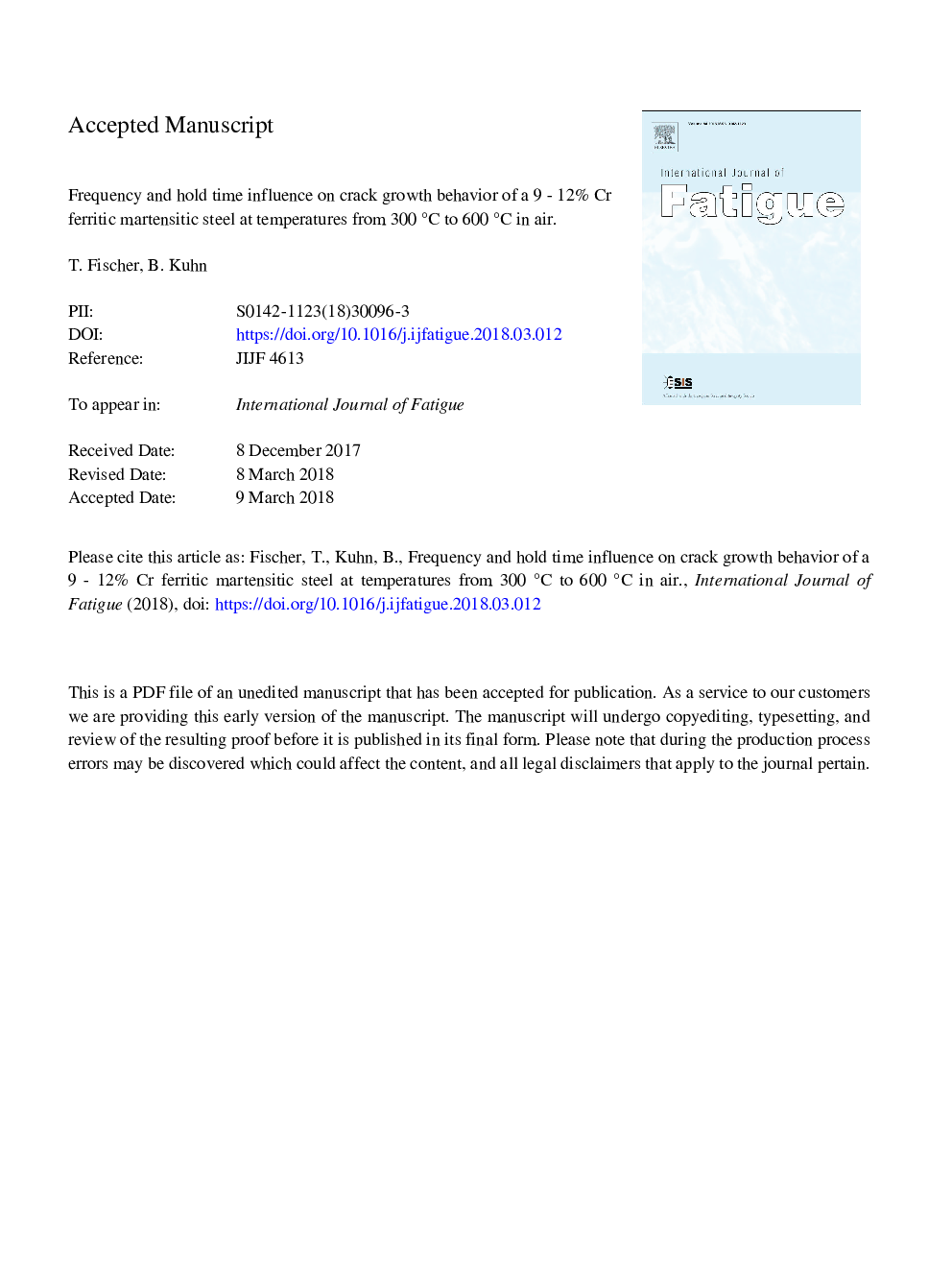| Article ID | Journal | Published Year | Pages | File Type |
|---|---|---|---|---|
| 7171457 | International Journal of Fatigue | 2018 | 20 Pages |
Abstract
Due to an increase of renewable energies proportion, e.g. wind power and photovoltaics, which cannot supply energy constantly, modern power plants must be able to be operated flexibly in order to compensate the residual load. As a consequence of increasing alternating load, fatigue damage becomes more and more important, while creep damage caused by ever shorter holding times at high operating temperature decreases. In this study a turbine bypass valve, one of the most fatigue loaded power plant components, manufactured from widespread standard 12% Cr ferritic/martensitic steel X20 was investigated. Fatigue crack growth experiments showed that the crack growth rate increases slightly with decreasing frequency (20â¯Hzâ¯ââ¯5â¯Hz). In hold time tests (300â¯sâ¯ââ¯600â¯s, effective frequency 3.33â¯Ãâ¯10â3 Hzâ¯ââ¯8.33â¯Ãâ¯10â4), larger crack propagation rates per cycle occur than in the fatigue crack growth experiments with 5 and 20â¯Hz. In comparison to pure cyclic loading maximum load holding time further required significantly higher ÎK values to start crack growth.
Related Topics
Physical Sciences and Engineering
Engineering
Mechanical Engineering
Authors
T. Fischer, B. Kuhn,
